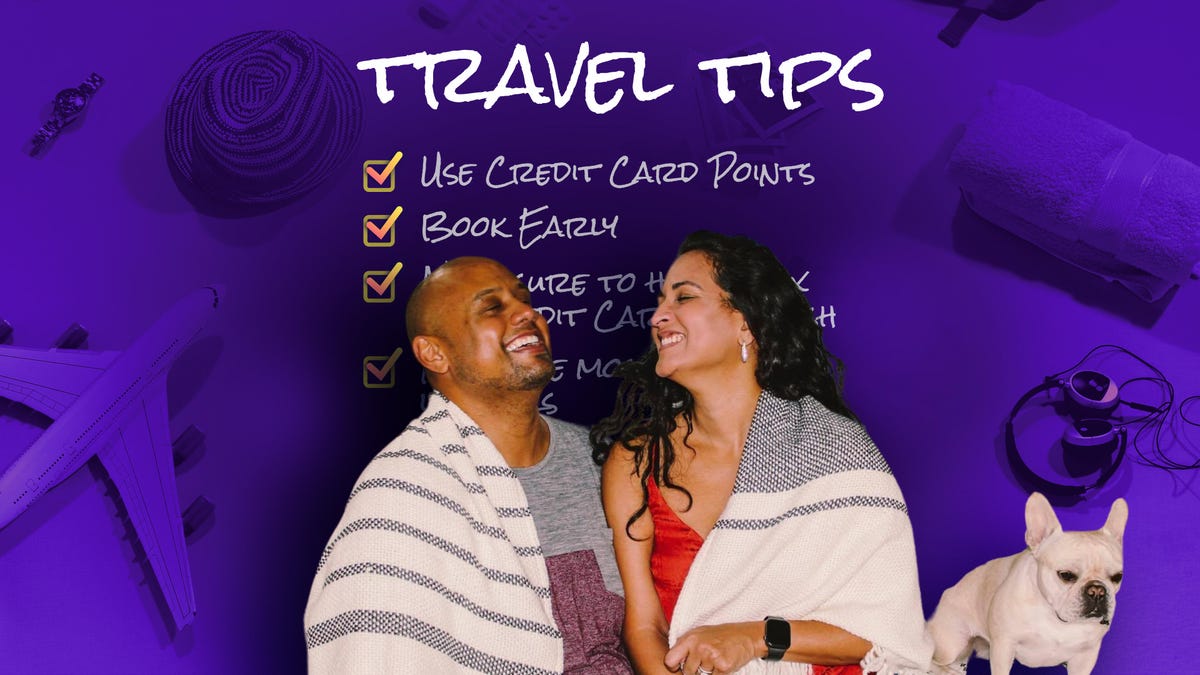For my 40th birthday, my wife and I went on a cruise to the Greek islands. We booked a Royal Caribbean ship well in advance during a low season for cruises, and shortly after pandemic restrictions had been lifted, so we paid about a fourth of the usual cost for what ended up being a great experience.
Not every facet of the trip was a deal, though. In Cypress, the hotel we booked wasn’t near the cruise port, there were no taxis near our hotel when it came time to depart, and ride-sharing options weren’t available. Stressed out, we eventually offered the hotel manager a generous fee to take us to the cruise terminal, which he did — at about triple the normal taxi rate.
Traveling on a budget is all about good planning. I’ve been a digital nomad for the past eight years and have traveled to 88 countries in my lifetime. Some of my trips have had hiccups because I didn’t plan ahead and take advantage of money-saving options. Others have been picture-perfect, getting all the options I wanted and enjoying the moments that make life worth living, such as sipping a coffee on the balcony of an Airbnb overlooking Cape Town, South Africa.
If you want more of the latter, here are five summer travel tips to help you save money and still have a comfortable, enjoyable experience.
Plan early
Summer tends to be a time for more family trips and longer vacations. When you factor in all those additional people traveling on flights and trains and staying in hotels, space can fill up quickly.
The earlier you plan your trip, the more likely you will find lower prices and get the booking options you want. When you can, you should plan and book early to get the best deals and availability. It’s much easier to change booked trips than to find last-minute options that both match your itinerary needs and are affordable.
If you’re tight on cash, but know you want to travel often, consider seeking out a credit card with good travel perks. Also think about setting up a sinking fund so you’re saving throughout the year for summer adventures and can pay for them in cash.
Be strategic with where you book
I can’t tell you how many times I’ve seen other travelers have a meltdown because they booked their flight with a third-party service, and then when it gets delayed or canceled, the airline representative in the terminal can’t actually help them.
How you book a trip is just as important as when you book. Although services such as Expedia, Priceline and Kayak may offer a cheaper price on a flight, your help options might be limited if something goes wrong with your itinerary. From my experience, it’s better to book flights directly with airlines when possible. (Hotels are less risky if you use a third-party booking site, though.)
Be strategic so that your travel plans are turned upside down by unpredictable setbacks.
Use credit card points for free or upgraded travel
One way to save money on travel is to utilize credit card reward programs. Many credit cards have reward programs that allow you to earn points on categories such as gas, groceries, restaurants, shopping, rent and other everyday expenses.
Look for cards that offer a 2x or 3x points bonus on categories where you already spend money each month. Then, use those points to book free or upgraded travel, either directly with the credit card issuers or by transferring the points to various rewards programs.
When I started as a digital nomad, I was strategic about which credit cards I applied for because I wanted to maximize the points-earning categories and welcome offers. These credit cards have allowed me to book travel sooner and earn points on everyday spending. Since I have a business, I also use business credit cards and earn points for travel.
Some of my favorite credit cards I use for travel are:
- The American Express Green Card, which earns 3x points for every dollar spent on travel (hotels, flights, third-party booking sites), transit (rental cars, tolls, parking) and dining (restaurants and food service apps).
- The Citi Strata Premier Card, which earns 3x points for every dollar spent on gas, groceries, dining and EV stations.
- The Chase Preferred Ink Business Card, which earns 3x points for every dollar spent on the first $150,000 spent on travel, advertising and internet and phone services.
- The American Express Platinum Card, which earns 5x points for every dollar spent booking directly with the airline. Its benefits include access to the American Express Centurion Lounges and Priority Pass lounges, as well as reimbursement for Global Entry and Clear.
- The Venture X business credit card by Capital One, which earns two times points for every dollar spent on everything with no spending limit.
Additionally, I earned a 300,000-point welcome bonus from the Venture X card by using it on everyday business spend. I used these points to book round-trip first class tickets on Air France, and yes, it was awesome.
Think about the time you’ll spend in the terminal itself too. Airport lounges are a great way to comfortably rest and recharge, and perks like Global Entry and Clear make security easy because they walk you to the front of the line.
Lean into credit cards for more protection
On a trip I once made to Medellin, Colombia, my debit card was frozen due to fraud protection measures. At the time, I didn’t have another debit card, so I had to rely on my credit cards to pay for everything. That turned out to be a great learning experience because I now use credit cards for all purchases while traveling.
With a debit card, it can be hard to get your money back if there are any instances of fraud — it’s much easier to get your money back with a credit card. You never know what could happen when traveling, and you can’t walk into your local bank branch if there are any fraud issues. A credit card offers assistance anywhere in the world and gives you more protection.
For example, CitiBank shipped me a new Citi Strata Premier card to Kuala Lumpur, Malaysia, when I was there recently and had a fraud issue. You’ll appreciate the extra hospitality of a good credit card when travel hiccups occur.
Schedule long layovers to sneak in extra experiences
One strategy that’s brought more travel into my life is being strategic with the layovers between flights. A long layover is one with enough time to leave an airport and explore or even stay in town overnight between flights.
When booking an international trip, I look for itineraries with layovers of at least 12 hours in a country. Many major countries around the world have trains and buses that take passengers from the airport to the city center. Overnight layovers let you explore multiple countries on one trip. For example, when I travel to Africa, I usually fly KLM, so I like to book trips with overnight layovers in London, Amsterdam or Paris. This way, I can explore multiple countries with one itinerary.
If you’re going to use this strategy, remember to stay updated on your flight status and make sure the layover is long enough for you to comfortably explore and get back in time to go through security again to board your next flight.
Use these tips for better summer trips
As you plan your summer trips, remember these strategies for a smoother journey. I’ve learned each one through experience and now leverage them regularly to fully enjoy my travels.



